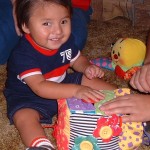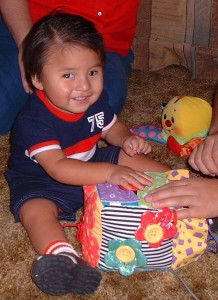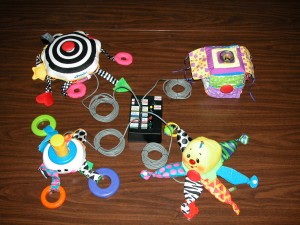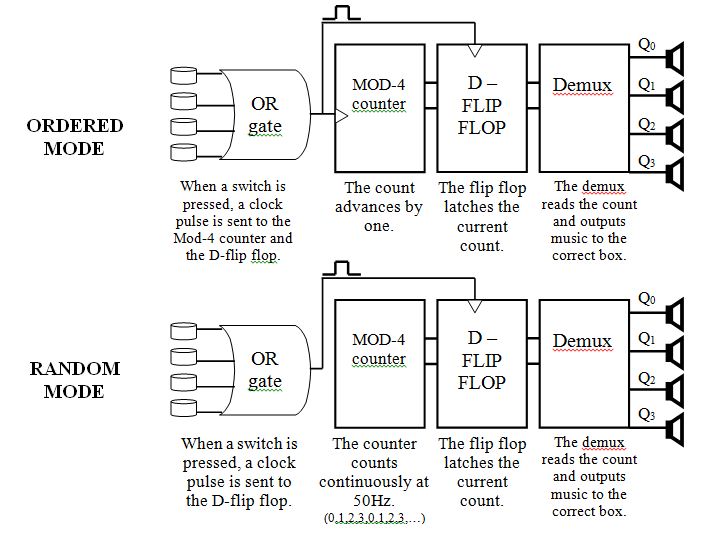Designers: Sirin Yaemsiri and Christa Wheeler
Client Coordinators: Susan Puckett, Governor Morehead Preschool for the Blind, and Diane Brauner, Orientation and Mobility Therapist
INTRODUCTION
We developed an orientation game for a sixteen-month-old boy with a genetic eye disorder called Leber’s Congenital Amaurosis, which results in severe visual impairment (VI). As with many VI children, he learned to walk without first learning to crawl. However, crawling is vital to developing the upper body strength and coordination required to use a cane and read Braille. Our game consists of four music cubes placed in different areas of a room. When the user turns on the game, music starts playing from one of the cubes. When the toddler hits the switch on the cube, music begins to play from a different cube. The game gives VI toddlers an incentive to crawl and explore by playing music in different areas of a room.
SUMMARY OF IMPACT
The client’s teacher at Governor Morehead Preschool for the Blind said that, “The orientation game is an innovative and creative way for a child who is visually impaired to develop auditory localization skills and to be motivated to move out into the environment to locate the sound. The toys are a wonderful reward for the grand effort involved in moving across space, and finding the toy that cannot be seen. This game can also easily be adapted to create more developmentally challenging activities for [the client] as he gets older.”
TECHNICAL DESCRIPTION
The device (figures 1 and 2) consists of a control box and four “sound cubes”, which are commercial toys that were each adapted by adding a speaker and large red momentary switch. The therapist can place the sound cubes in different areas around a room. When the device is turned on, music plays from one of the sound cubes. This would encourage the toddler to approach and explore the toy that is emitting the music. Once there, the toddler can hit a momentary switch button on the toy, which triggers a sound cube in another location to start playing music.
The device can operate in two modes: 1) ordered mode and 2) random mode. In the ordered mode, the child becomes familiar with the orientation of the room by hearing the sound cubes activate in a predetermined order. Once the child is familiar with the orientation of the room, the parent or therapist can switch the device to random mode so that the sound cubes activate in a random sequence. The unpredictability adds excitement to the game.
The device is powered by a 9V DC battery source. The control box includes the toggle “on or off” switch, four potentiometers with audio taper to control the volume for each sound box, a toggle “ordered or random mode” switch, and the main circuit (Figure 3) that determines which sound cube to activate. When the device is in ordered mode each time the toddler hits a switch a counter in the main circuit advances one step and the sound box corresponding to that number is activated. When the device is in random mode the mod-4 counter counts continuously at 50 Hz. When the toddler hits a switch, D-flip flops latch the current count and the sound cube corresponding to that number is activated. After the D-flip flops latch the current count, 3V is sent to the corresponding M-66 melody generator chip. These melody generators have 3 leads: one lead is grounded, one lead receives 3V power, and the third outputs the melody. The parent or therapist can easily change the melody of each music box by switching in different M-66 chips.
Each sound cube contains a speaker and a momentary switch button.
The cost of this project is approximately $75.





University Operator: (919) 962-2211 | © 2024 The University of North Carolina at Chapel Hill |